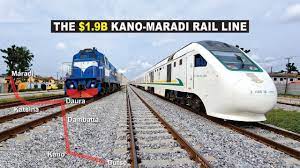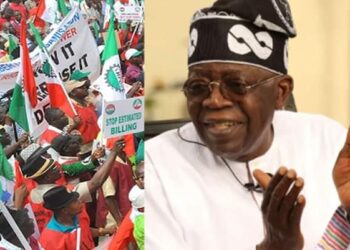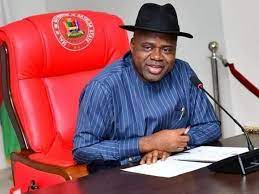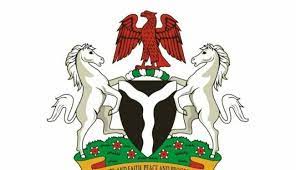The Minister of Transportation, Senator Sa’idu Alkali, has testified that the Kano-Daura-Maradi railway project which took-off during the APC-led administration of past President Muhammadu Buhari is going on smoothly. This is pleasing.
The Minister reportedly drove along the cleared path for the rail tracks from Dawanau to Kazaure emirate. The project monitoring trip appropriately ended at the University of Transportation, Daura.
The $1.95 billion project was awarded in 2021. Physical work started in late 2022. The Minister was happy that earthwork and bush clearance have reached 80 percent completion. The contractor has delivered numerous heavy-duty equipment to a huge project marshaling area in Kazaure, Jigawa state.
The minister said that because the earth work has reached 80 percent completion, the assurance given by the contractor that the project would be timely completed in 2025 is credible. This affirms that this legacy project of the APC-led administration of President Muhammadu Buhari is on course.
The scope of work on the project involves a new railway line of 1435mm (standard) gauge on which passenger and good trains can run on a maximum speed of 150 kilometers per hour. The length of the tracks is 400 kilometers. The project design, if it remains unmodified, includes 20 railway stations, five maintenance workshops and yards; a total 52 railway bridges; 75 road overpasses and six road underpasses.
The minister of transportation in the administration of past President Buhari, Chibuike Rotimi Amaechi, has told Nigerians that, the Kano-Maradi railway project has a branch component linking Kano to Dutse Gadawur, the capital of Jigawa state. One of the observations on the project is that so far, there is no visible physical work on the Dutse branch.
Another observation is that the Minister did not comment on its start-date during his project monitoring visit. Is the Dutse branch is still on the cards?
Members of the National Assemby from Kano, Jigawa and Katsina states, all ministers from the three states, the Governors of the three states and the national chairman of the APC may jointly work to ensure that the Kano-Dutse branch is not dropped from the Kano-Maradi railway project.
Work on the Dutse branch is not the only aspect of the project that is still on paper. It is observed that not a single of the 52 bridges and the 81 under and overpasses was seen along the earhworked and cleared track path.
It was observed that none of the five maintenance workshops and yards is on ground. The location for the station in my home town, Dambatta, one of 20 in the project, is still unknown to the residents who welcomed the railway to their door step.
The Kano-Maradi rail project is part of our country’s ambitious Railway Modernisation and Expansion Master Plan, in which all state capitals and other principal cities in the country would be linked by railway.
The plan envisaged linking all sea ports, major international airports and the main economic centres of the country by rail. The planners believed this can make Nigeria the hub of an intermodal transportation network for the West African subregion. It is because of the desire to achieve that regional-hub status that, the Railways Master Plan includes linking appropriate border towns in Cameroon, Niger and the Republic of Benin by rail.
On the Kano-Maradi line, a document says: “An agreement between Nigeria and Niger in 2015, coordinated by the Nigeria-Niger Joint Commission for Cooperation, has a plan for Kano-Katsina-Maradi Corridor Master Plan, (K2M).”
The project will make impact on the wellbeing of Nigerians by facilitating domestic trade, encouraging tourism, boosting countless economic activities and strengthening social interactions among the citizens. Indeed, the citizens have registered an association which is keenly monitoring the progress of the Kano-Maradi railway project.
And as work on the Kano-Maradi line progresses, the quality of materials for the project should be scrutinised intensely. This will ensure that the minister of transportation would not have to personally detect sub-standard materials as he did while monitoring the new Kaduna-Kano project and the rehabilitation of the ancient Calabar-Maiduguri line.
Salisu Na’inna Dambatta,
Kano




